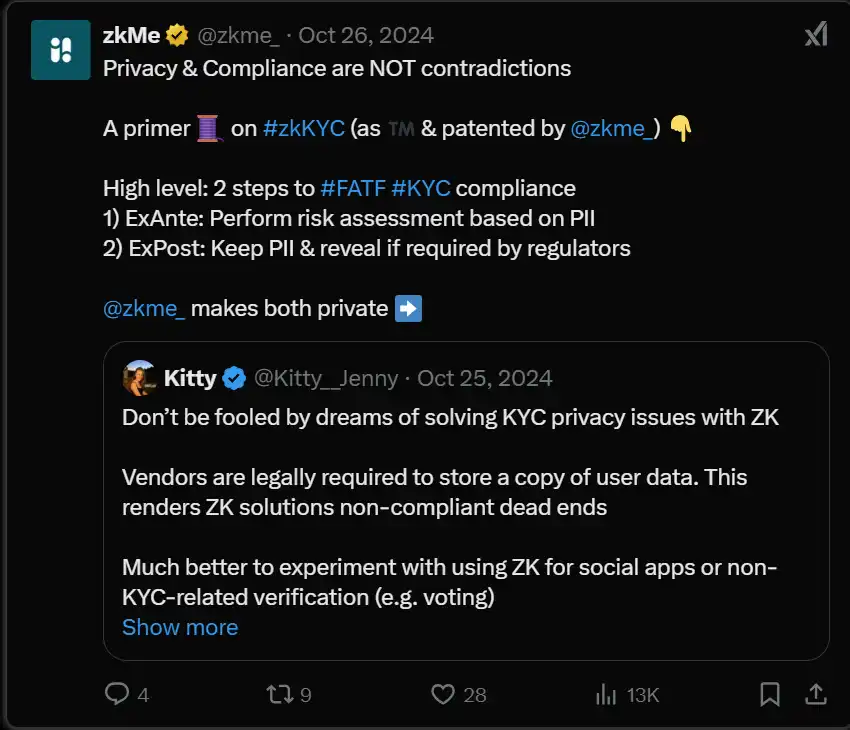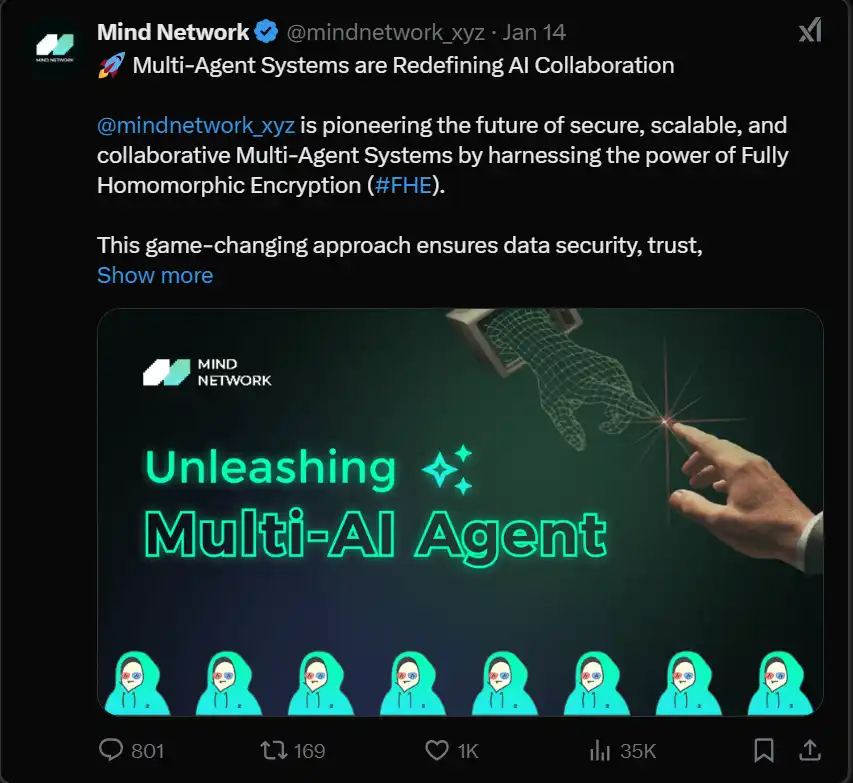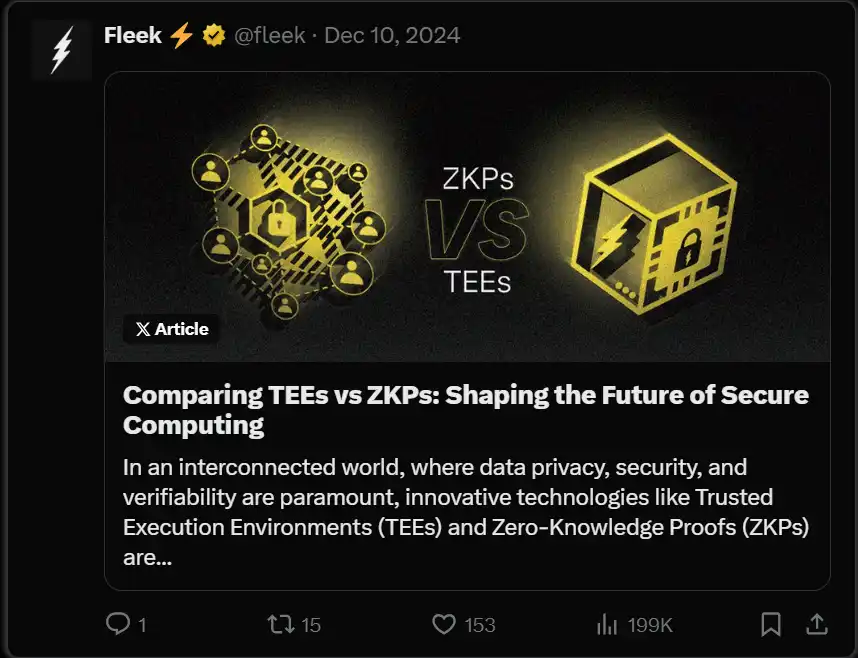With the surge in AI development, privacy and verifiability are further complicated while improving privacy protection.
Author: Defi0xJeff, head of steak studio
Compiled by: zhouzhou, BlockBeats
Editor’s note:This article focuses on discussing a variety of technologies to enhance privacy and security, including zero-knowledge proof (ZKP), trusted execution environment (TEE), fully homomorphic encryption (FHE), etc., and introduces the applications of these technologies in AI and data processing., how to protect user privacy, prevent data leakage, and improve system security. The article also mentioned some cases, such as Earnifi, Opacity and MindV, showing how these technologies can achieve risk-free voting, data encryption, etc., but at the same time these technologies face many challenges, such as computing overhead and latency issues.
The following is the original content (the original content has been compiled for ease of reading and understanding):
As data supply and demand surge, the digital footprint left by individuals becomes increasingly extensive, making personal information more vulnerable to abuse or unauthorized access. We have seen some cases of personal data breaches, such as the Cambridge Analytica scandal.
Those who have not yet followed can check out the first part of the series, where we discussed:
·the importance of data
·Artificial intelligence’s growing demand for data
·The emergence of the data layer

Europe’s GDPR, California’s CCPA and regulations elsewhere around the world make data privacy more than an ethical issue, but a legal requirement, pushing companies to ensure data protection.
With the surge in the development of artificial intelligence, AI has further complicated the fields of privacy and verifiability while improving privacy protection. For example, while AI can help detect fraudulent activity, it can also enable “deep counterfeiting” techniques, making it more difficult to verify the authenticity of digital content.
advantages
·Machine learning for privacy protection: Federated learning allows AI models to be trained directly on the device without having to centralize sensitive data, thereby protecting user privacy.
·AI can be used to anonymize or anonymize data, making it difficult to trace back to individuals while still being available for analysis.
·AI is critical to developing tools to detect and reduce the spread of deep forgeries, thereby ensuring the verifiability of digital content (as well as detecting/verifying the authenticity of AI agents).
·AI can automatically ensure that data processing practices comply with legal standards, making the verification process more scalable.
challenges
·AI systems often require large data sets to function effectively, but the way data is used, stored and accessed can be opaque, raising privacy issues.
·With enough data and advanced AI technology, individuals may be re-identified from data sets that should be anonymous, undermining privacy protection.
·Because AI is able to generate highly realistic text, images or video, distinguishing between real and AI-forged content becomes more difficult, challenging verifiability.
·AI models can be deceived or manipulated (adversarial attacks), undermining the verifiability of data or the integrity of the AI system itself (as shown in Freysa, Jailbreak, etc.).
These challenges drive the rapid development of AI, blockchain, verifiability and privacy technologies, leveraging the advantages of each technology. We have seen the rise of the following technologies:
·Zero-Knowledge Proof (ZKP)
·Zero-Knowledge Transport Layer Security (zkTLS)
·Trusted Execution Environment (TEE)
·Completely Homomorphic Encryption (FHE)
1. Zero-Knowledge Proof (ZKP)
ZKP allows one party to prove to another that it knows certain information or a statement is correct without revealing anything beyond the proof itself. AI can use this to prove that data processing or decisions meet certain standards without revealing the data itself. A good case study is getgrass io, which uses idle Internet bandwidth to collect and organize public web data for training AI models.

Grass Network allows users to contribute their idle Internet bandwidth through browser extensions or applications, which is used to grab public web data and then process it into structured datasets suitable for AI training. The network performs this webpage scraping process through nodes run by users.
Grass Network emphasizes user privacy and only crawls public data, not personal information. It uses zero-knowledge certificates to verify and protect the integrity and origin of data, prevent data corruption and ensure transparency. All transactions from data collection to processing are managed through sovereign data aggregation on the Solana blockchain.
Another good case study is zkme.
zkMe’s zkKYC solution addresses the challenge of conducting the KYC (Know Your Customer) process in a privacy-protected manner. By leveraging zero-knowledge certificates, zkKYC enables the platform to verify user identities without exposing sensitive personal information, thereby maintaining compliance while protecting user privacy.

2.zkTLS
TLS = standard security protocol that provides privacy and data integrity between two communication applications (usually associated with the “s” in HTTPS). zk + TLS = Improve privacy and security in data transmission.
A good case study is OpacityNetwork.
Opacity uses zkTLS to provide a secure and private data storage solution. By integrating zkTLS, Opacity ensures that data transfers between users and storage servers remain confidential and tamper-resistant, thereby solving the privacy issues inherent in traditional cloud storage services.

Earnifi is an app that has reportedly climbed to the top of the app store rankings, especially among financial apps, leveraging OpacityNetwork’s zkTLS.
·Privacy: Users can provide their income or employment status to lenders or other services without having to disclose sensitive bank information or personal information, such as bank statements.
·Security: The use of zkTLS ensures that these transactions are secure, verified and remain private. It avoids the need for users to entrust all financial data to a third party.
·Efficiency: The system reduces the costs and complexity associated with traditional payroll early capture platforms, which may require cumbersome verification processes or data sharing.
3.TEE
The Trusted Execution Environment (TEE) provides hardware-enforced isolation between the normal execution environment and the secure execution environment. This is probably the most well-known security implementation among AI agents currently to ensure that they are fully autonomous agents. Promoted by 123skely’s aipool tee laboratory: a TEE pre-sale event in which the community sends funds to agents, and the agents issue tokens independently based on predetermined rules.

Marvin Tong’s PhalaNetwork: MEV protection, ElizaOS integrating ai16 zdao, and Agent Kira as a verifiable autonomous AI agent.

fleek’s one-click TEE deployment: focuses on simplifying usage and improving developer accessibility.

4. FHE (Complete Homomorphic Encryption)
A form of encryption that allows calculations to be performed directly on encrypted data without first decrypting the data.
A good case study is mindnetwork xyz and its proprietary FHE technology/use case.

Use cases FHE Heavy pledge layer and risk-free voting
FHE heavy pledge layer
By using FHE, heavily pledged assets remain encrypted, which means that the private key is never exposed, significantly reducing security risks. This ensures privacy while also verifying transactions.
Risk-free voting (MindV)
Governance voting is conducted on encrypted data, ensuring that voting remains private and secure, reducing the risk of coercion or bribery. Users gain voting power (vFHE) by holding heavily pledged assets, decoupling governance from direct asset exposure.
FHE + TEE
By combining TEE and FHE, they create a powerful security layer for AI processing:
·TEE protects operations in the computing environment from external threats.
·FHE ensures that operations are always performed on encrypted data throughout the process.
For institutions processing $100 million to $1 billion + transactions, privacy and security are critical to prevent pre-transaction, hacking, or exposure of trading strategies.
For AI agents, this double encryption enhances privacy and security, making it very useful in the following areas:
·Protect internal model weights (prevent reverse engineering/IP theft)
·user data protection
The main challenge for FHE remains high overhead due to computation-intensive nature, which leads to increased energy consumption and latency. Current research is exploring methods such as hardware acceleration, hybrid encryption techniques, and algorithm optimization to reduce computing burdens and improve efficiency. Therefore, FHE is best suited for low-computing, high-latency applications.
summary
·FHE = Operate on encrypted data without decryption (the strongest privacy protection, but the most expensive)
·TEE = hardware, secure execution in an isolated environment (balancing security and performance)
·ZKP = Proving statement or authenticating identity without revealing underlying data (applies to proving facts/credentials)
This is a broad topic, so this is not the end. A key question remains: In an era of increasingly sophisticated deep counterfeiting, how do we ensure that AI-driven verifiability mechanisms are truly trustworthy? In Part 3, we will explore in depth:
·verifiability layer
·AI’s role in verifying data integrity
·Future development of privacy and security

Welcome to join the official social community of Shenchao TechFlow
Telegram subscription group: www.gushiio.com/TechFlowDaily
Official Twitter account: www.gushiio.com/TechFlowPost
Twitter英文账号:https://www.gushiio.com/DeFlow_Intern



